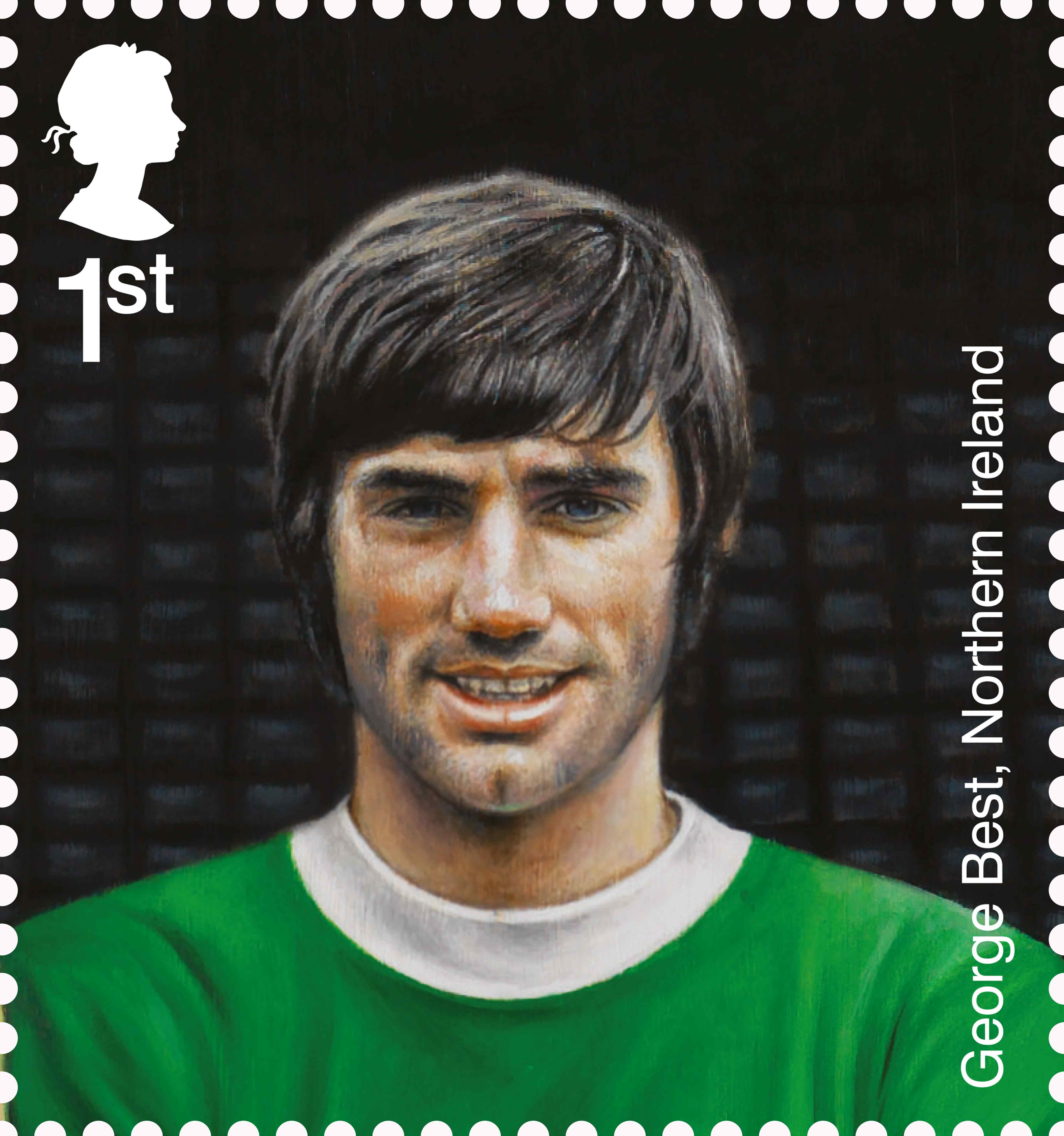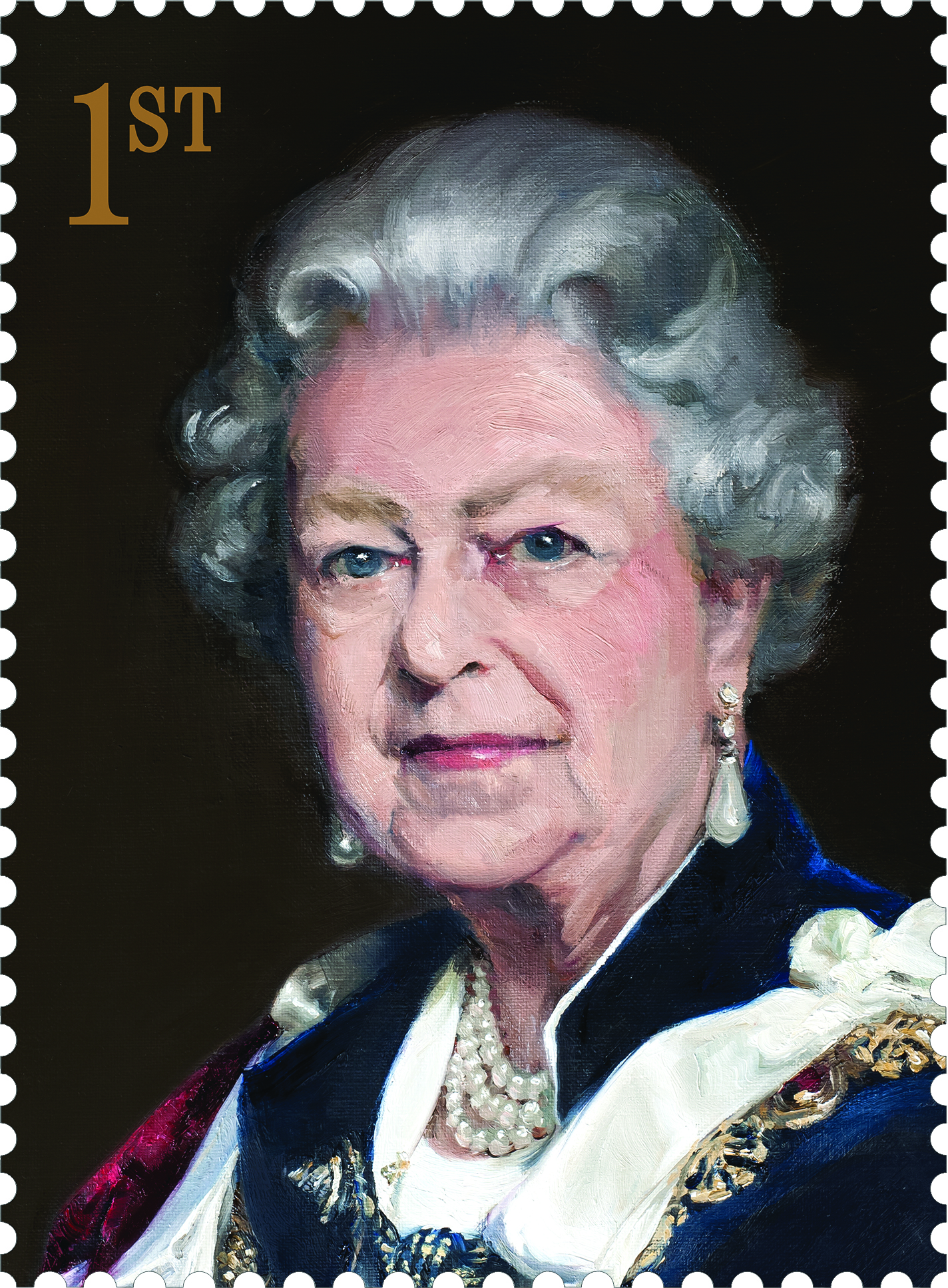Re-living the Dambusters’ Raid – exactly 70 years ago today
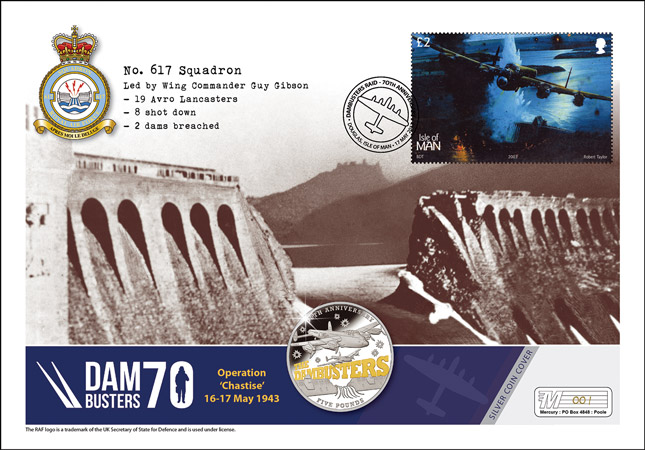
Just 495 Dambusters Anniversary Silver Coin Covers will be flown on board one of two surviving Lancaster bombers as part of tonight’s 70th anniversary memorial
16th May 2013 – the 70th anniversary of the Dambusters’ Raid – the exact moment when, on 16th May 1943, 617 Squadron set off from RAF Scampton in Lincolnshire under Wing Commander Guy Gibson to destroy the dams of Germany’s Ruhr Valley with their ‘bouncing bombs’.
As part of the official Battle of Britain Memorial, 495 specially designed Dambusters’ covers will be flown on board one of just two surviving Lancaster Bombers over Derbyshire’s Derwent Reservoir, part of Derwent Dam – an area used by the pilots for training.
RAF-approved
An Officially Approved Royal Air Force Commemoration, each cover features an original Dambusters’ stamp, postmarked with an exclusive cancellation dated 17th May, and an official 70th Anniversary Dambusters Coin struck in Solid 925/1000 Silver to the highest proof finish, its reverse enhanced with selective 24-Carat Gold-Plating.
Just 495 available
Due to the cover’s uniqueness and the fact that tonight’s flight will never be repeated, no more covers will ever be available once all 495 have been sold. The anniversary flight details on the reverse of each cover confirm it has been part of this historic Dambusters’ re-enactment.
Commemorate the Battle of Britain by securing one of these commemoratives – click here.
Do you agree with Royal Mail’s 11-man squad?
Most of us will recognise a few, if not all, of these famous faces. This line-up is Royal Mail’s ultimate ‘dream team,’ eleven greatest ever football players, chosen to feature on their new set of stamps – on sale now – marking the FA’s 150th anniversary.
If you haven’t guessed all eleven, here’s the full line-up:
(Back row, from left to right):
Jimmy Greaves, John Charles, Gordon Banks, George Best and John Barnes
(Front row):
Kevin Keegan, Denis Law, Bobby Moore, Bryan Robson, David MacKay and Bobby Charlton
Now you know who they all are, do you agree with Royal Mail’s selection?
There are a number of obvious choices that few would contest. Bobby Moore, for example, the only World Cup winning captain or Gordon Banks, regarded by many as the greatest goal keeper ever to play for England.
Now I’m no expert on the beautiful game but I’m surprised Paul Gascoigne isn’t included on this list. The same possibly goes for Peter Shilton.
Royal Mail themselves admit not everyone may agree with their choices but that they chose 11 men “whose key senior career was within the years 1963-1990s” or, those “who have a cult following and widespread agreement of genius on the pitch” such as the late George Best.
Of course if the team had included present day players, it would have looked different again. But whatever your views on the chosen team, there’s no doubt they would have made a formidable line-up.
So who would you liked to have seen in the line-up? Let me know below …
Which is your favourite portrait of the Queen?
I recently reported that Royal Mail had revealed six of the best painted portraits from the Queen’s sixty-year reign as part of its new ‘Six Decades of Royal Portraits’ issue. A fitting tribute to the Queen as patron of the Royal Society of Portrait Painters, sixty years after her Coronation.
The six included an early 1953 Coronation portrait plus the first one ever commissioned by Royal Mail. But which one gets your royal seal of approval? Here’s a brief reminder of all the contenders:
The Coronation portrait – by official Coronation artist Terence Cuneo 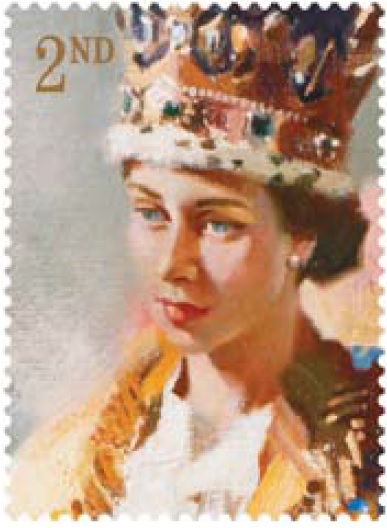
whose portrait depicts a young, newly-crowned Queen.

The Italian job – still the most iconic portrait of her reign? Fifty-seven years on, Pietro Annigoni’s portrayal continues to court controversy.
Chelsea pensioners’ portrait – Andrew Festing’s 1999 portrait, painted for the Royal Hospital Chelsea, home of the famous pensioners, where it still hangs today.
 The new Millennium portrait – unveiled by the Queen herself in 2000, Sergei Pavlenko’s portrait is said to be the Queen’s favourite but is it yours?
The new Millennium portrait – unveiled by the Queen herself in 2000, Sergei Pavlenko’s portrait is said to be the Queen’s favourite but is it yours?
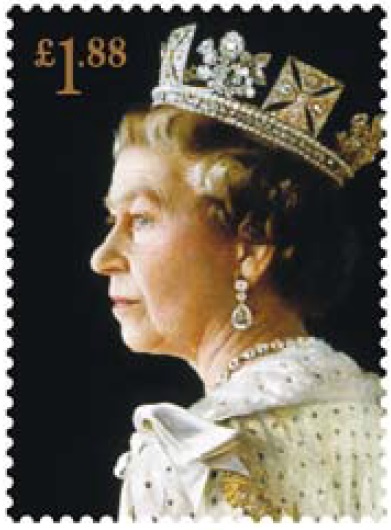
The first forty years – displayed at the National Portrait Gallery from 1992, Richard Stone’s portrait now hangs in the more modest setting of Colchester town hall.
The Royal Mail world-exclusive – painted over three sittings by Nicky Philipps at Buckingham Palace at the end of her Diamond Jubilee year, 2012.
Vote now!
I know which is my favourite but which one’s yours?


